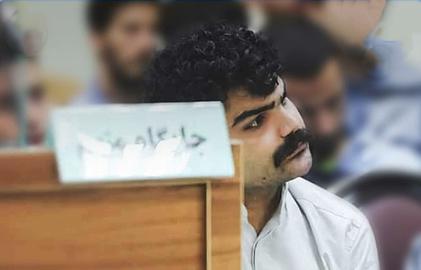Drug use is on the rise in Iran, and it is destroying families. Mehr News reported that a 47-year-old man killed his 37-year-old wife and seven-year-old son, and then himself on January 14, 2015. One of the couple’s other sons found their bodies when he returned home from school. The police report stated that the man was addicted to methamphetamine, also known as crystal meth. Though this is a shocking and somewhat rare case, it illustrates the damage that drug addiction can cause to relationships, families and society in general.
“If I didn’t have a child, it might be easier to live with my addict of a husband,” one 31-year-old woman told a judge presiding over a family court in Tehran. “It is extremely hard for me to watch how our son is affected. He suffers from depression because of his father’s addiction. We lived in peace until he started hanging out with a friend who was an addict. He promised the friendship would not affect him or our family. Now he is addicted. He hits our four-year-old child, who is now permanently scared of him. I can’t bear to see my son cry because of his father’s behavior. I want a divorce.”
Divorce was a stigma in Iran just a few years ago. Rather than run the risk of being exposed as a divorcee, couples frequently chose to stay in unhappy marriages. But, today, divorce is no longer a taboo. Like other nationalities, Iranians divorce for a range of different reasons: economic problems, incompatibility, unrealistic expectations, adultery and abuse. In Kuwait, which has the highest divorce rate among Arab countries and the second highest divorce rate in the world, the main cause is infidelity, with drug addiction featuring relatively low on the list. In the United States, where one in two marriages end in divorce, drug addiction does not appear in the top five causes. However in Iran, drug addiction is the most common reason for divorce.
Divorce and Addiction
According to figures from Iran’s National Organization for Civil Registration, approximately 20 percent of marriages end in divorce. More than 103,300 divorce cases were logged in Iran in the eighth-month period between March and October 2014, and the number of divorces steadily increases every year. Over the last 15 years, the divorce rate in Iran has nearly tripled — a reality that has given the government, and society in general, a cause for concern.
Equally, drug abuse is on the rise in Iran, particularly among the younger generation. According to a United Nations Office on Drugs and Crime report, Iran has one of the highest proportions of opiate addicts in the world. A report published by Iran’s interior minister, Abodolreza Rahmani Fazli, says that 55 percent of all divorces have some link to drug addiction. And other reports indicate that 63 percent of addicts are married.
It is well documented that addiction can ruin relationships, and Iran is no exception. And divorce, brought about for whatever reason, can cause depression, stress, anxiety and panic attacks, all of which can lead to substance abuse. “I can’t bear it any more,” says 38-year-old Maryam, whose husband lost his job a year ago due to addiction. “It’s been five years. I’ve been trying to help my husband quit, but have not been at all successful. I always thought he would wake up one day and change things. He hits me and swears at me for the smallest things in front of our three-year-old son. The only reason I stay with him is my son, but I can’t live with him.”
Heroin addicts Reyhan and her husband are in prison for selling drugs. When they began using, they both had good jobs and could afford to fund their habit. However they were quickly fired, which is when they began selling drugs. “I was working in one of the top insurance companies when my husband lost his job because of substance abuse,” Reyhan says. “He didn’t want me to blame him, and somehow he persuaded me to try heroin. I can’t remember how it happened, but I became an addict. Now I’m unemployed and an outcast.”
Another addict, Amir Ali, began using drugs after his divorce. “Any time I used methamphetamine, everything seemed feasible and every wish achievable,” Ali said. “I did not feel sleepy or tired — which prevented me from working after my divorce.” He used to work at a large chain store in Tehran but lost his job because of his drug habit.
Drug addiction can stem from poverty, depression, or from genetic or environmental factors. Psychologists, sociologists and public health officials have outlined the impact addiction has on family in Iran and elsewhere in the world.
Spouses of addicts report a gradual change in their husband or wife’s behavior — they become more erratic and unpredictable — making it increasingly difficult to live with them. Whether it is physical abuse or financial problems, those living with addicts undoubtedly face a tough time. According to one report, by the US-based National Institute of Drug Abuse, in addition to domestic violence, drug abusers might also perpetrate “economic compulsive violence;” when a drug user turns to violent crime to fund their addiction. “This type of violence may emerge between spouses when drug users take money from the spouse; further, arguments between spouses about money could lead to violent altercations.”
Children at Risk
“Children of addicts are at risk of depression and anxiety,” says Zahra Adel, a psychologist at Sadughi Hospital in Yazd who has studied mental disorders among the children of addicts. “They can develop antisocial behavior and find it difficult to cope.” A number of studies, including one carried out by the Canadian government, have found that children raised by addicted parents are more likely to become addicts themselves.
The physical effects of drug use and abuse are also widely documented, as are the risks of contracting HIV and other diseases through needle use. The 1994 film Mohammad and the Matchmaker tells the story of a former addict, who was diagnosed with HIV, and his search for a wife.
In Iran, drug addiction is most prevalent among men. But this too is changing: the number of female addicts is rapidly growing. According to an organization that combats narcotic addiction in Iran, women constitute approximately 10 percent of all drug addicts in Iran. The majority of them are married — suggesting that the number of men wanting to divorce their wives on the grounds of addiction is also on the rise.
Unlike Iran, in other countries where there are high numbers of opiate addicts —Afghanistan and Pakistan — divorce remains taboo. Because Iran permits divorce, experts can study the link between the breakdown of a family and drug abuse. In some ways, Iran — closely tied to traditional values, but willing to acknowledge that divorce is a necessity — is uniquely positioned to assess how this societal ill might be addressed.
But although drug addiction is an increasing problem in Iran, for the most part, Iranian authorities avoid it, with many refusing to accept the serious threats it poses to society. One exception is MP Abbas Salahi, who has called for policy-makers to confront the issue head on, looking particularly at the increase of drug use among school-age children.
According to Iran’s Interior Minister, there are more than 1.3 million addicts in Iran — 2.5 percent of Iran’s total population. More than half of these addicts are married. Applying statistics on the average number of children per family in Iran, it can be estimated that up to 1.4 million children are affected by drug addiction in Iran today, and more than six million Iranians are affected by problems related to drug addiction. The situation is escalating at an alarming rate. In communities where drug addiction is prevalent, the future for families is bleak. And there is good reason to believe it will get worse.



































comments